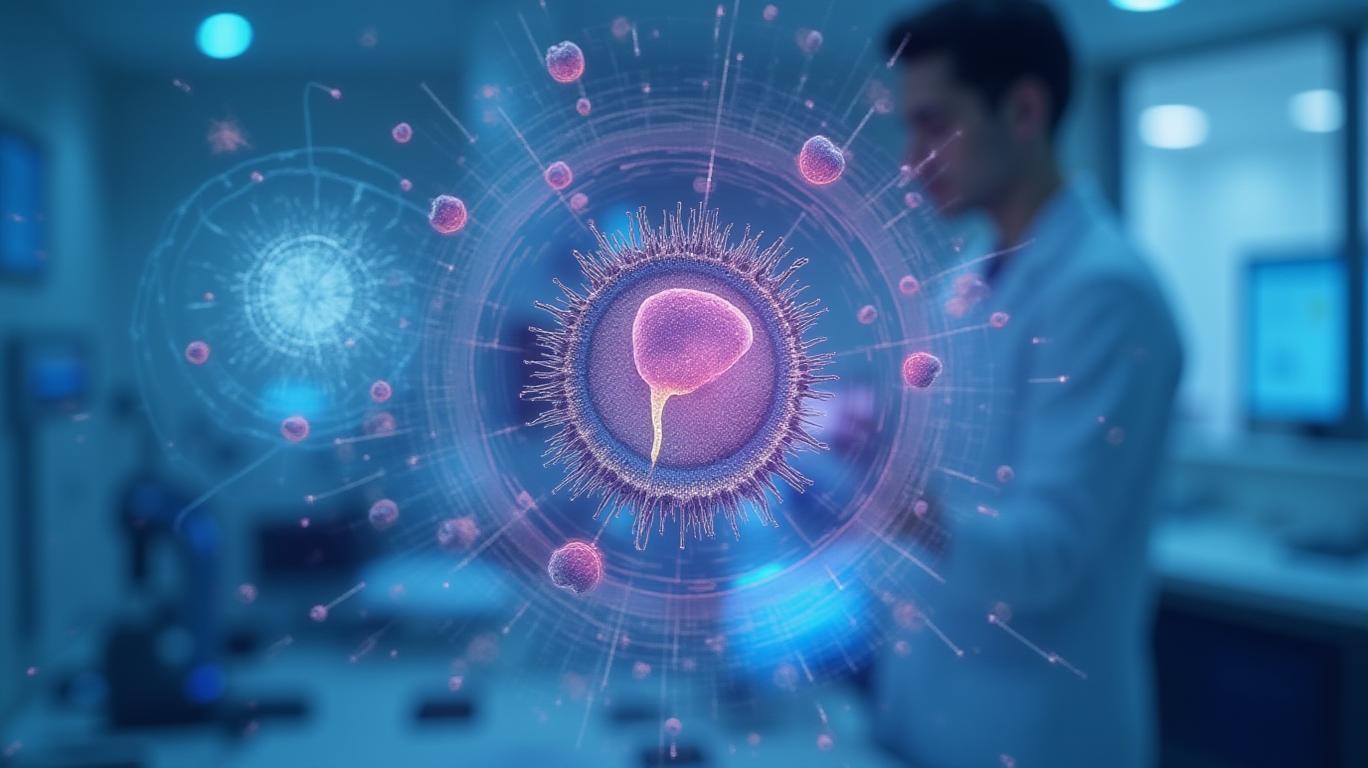Efruxifermin’s Fibrosis Breakthrough: Why Akero Therapeutics and HistoIndex’s AI-Driven Data Could Transform MASH Treatment and Stock Value
The metabolic dysfunction-associated steatohepatitis (MASH) market is a ticking time bomb. With 25% of the global population affected and no FDA-approved therapies, the race to develop effective treatments is intensifying. At the EASL Congress 2025,
(NASDAQ: AKRO) and HistoIndex delivered a landmark update on their Phase 2b HARMONY trial, showcasing efruxifermin (EFX) as a potential game-changer. Paired with HistoIndex’s AI-based qFibrosis® tool, the data hints at a transformative approach to fibrosis assessment—and a compelling investment thesis.
The Science Behind the Breakthrough
The HARMONY trial evaluated EFX, a once-weekly FGF21 mimetic, in 128 patients with pre-cirrhotic (F2-F3) MASH. Key findings:
- 50mg EFX achieved 39% fibrosis improvement at 96 weeks (vs. 15% placebo), with 81% of patients classified as responders by qFibrosis®.
- 50% of 50mg-treated patients were concordant responders across three endpoints: qFibrosis®, ELF score, and FibroScan®—vs. <5% on placebo.
- qFibrosis® detected 18 responders at Week 24 using its continuous scoring system, versus just 10 responders by conventional pathology. This highlights its ability to identify early treatment effects, a critical advantage in clinical trials.
The trial’s design also addressed a major hurdle in MASH research: placebo noise. Biopsy variability and categorical scoring often obscure true drug effects. HistoIndex’s AI tool, combined with non-invasive biomarkers, reduced this noise, enabling clearer efficacy signals.
Why This Matters for Akero’s Pipeline and Market Position
EFX is now advancing into three Phase 3 trials (SYNCHRONY Histology, Outcomes, and Real-World) targeting all MASH stages. The HARMONY data strengthens its profile as a first-in-class therapy addressing both fibrosis and metabolic complications (e.g., insulin resistance, lipoprotein abnormalities).
Competitors like NGM Biopharmaceuticals (NGM) and Madrigal Pharmaceuticals (MDGL) are pursuing MASH therapies, but EFX’s multi-targeted mechanism and AI-supported data could carve a distinct advantage. Notably, concurrent SYMMETRY trial data showed EFX’s potential even in compensated cirrhosis—a population with no current treatment options.
Clinical and Commercial Catalysts Ahead
- 2025–2026: Phase 3 data readouts for SYNCHRONY Histology (histological response) and Outcomes (clinical endpoints like cardiovascular risk reduction). Positive results could fast-track FDA approval.
- qFibrosis® as a Regulatory Tool: If regulators accept qFibrosis® as a validated endpoint, it could shorten trial timelines and reduce costs for future studies.
- Market Opportunity: The global MASH drug market is projected to exceed $5 billion by 2030 (Grand View Research), with unmet needs in fibrosis progression and metabolic comorbidities.
Risks and Considerations
- Regulatory Hurdles: The FDA’s stance on AI-driven endpoints remains untested.
- Placebo Effects: While qFibrosis® mitigates some variability, real-world trial results could still be inconsistent.
- Commercial Competition: First-to-market status is critical; delays could erode AKRO’s valuation.
The Investment Case: High Reward, Manageable Risk
Akero’s valuation currently sits at $1.2 billion, with ~$300 million in cash. With $60 million in 2024 R&D spend, the company is well-funded through 2025. The HARMONY data reduces execution risks for Phase 3, making AKRO a high-conviction play on MASH’s therapeutic potential.
Key Takeaways for Investors:
- Catalyst Density: Multiple Phase 3 readouts in 2025–2026 offer clear milestones.
- Best-in-Class Data: EFX’s concordance across AI and non-invasive tests strengthens its clinical profile.
- Market Monetization: Addressing fibrosis and metabolic endpoints positions EFX for broad label expansion.
Conclusion: A Fibrosis Pioneer with AI-Backed Precision
The HARMONY trial’s results aren’t just about EFX—they redefine how MASH therapies are tested. By pairing qFibrosis® with non-invasive biomarkers, Akero and HistoIndex have created a gold standard for fibrosis assessment, reducing placebo variability and accelerating drug validation. With a $5 billion market beckoning and a Phase 3 pipeline on track, AKRO’s stock could surge if readouts align with HARMONY’s promise. For investors willing to bet on transformative biotech, this is a rare opportunity to back a potential first-in-class therapy with strong clinical and commercial tailwinds.
Final Call: Buy AKRO ahead of Phase 3 catalysts, targeting a $50–$60 price target (vs. current ~$35/share) upon positive data. Monitor for qFibrosis®’s regulatory adoption as a secondary catalyst.
Risk Rating: Moderate (Pipeline-dependent, but with strong clinical validation and manageable cash burn).
Sign up for free to continue reading
By continuing, I agree to the
Market Data Terms of Service and Privacy Statement

Comments
No comments yet